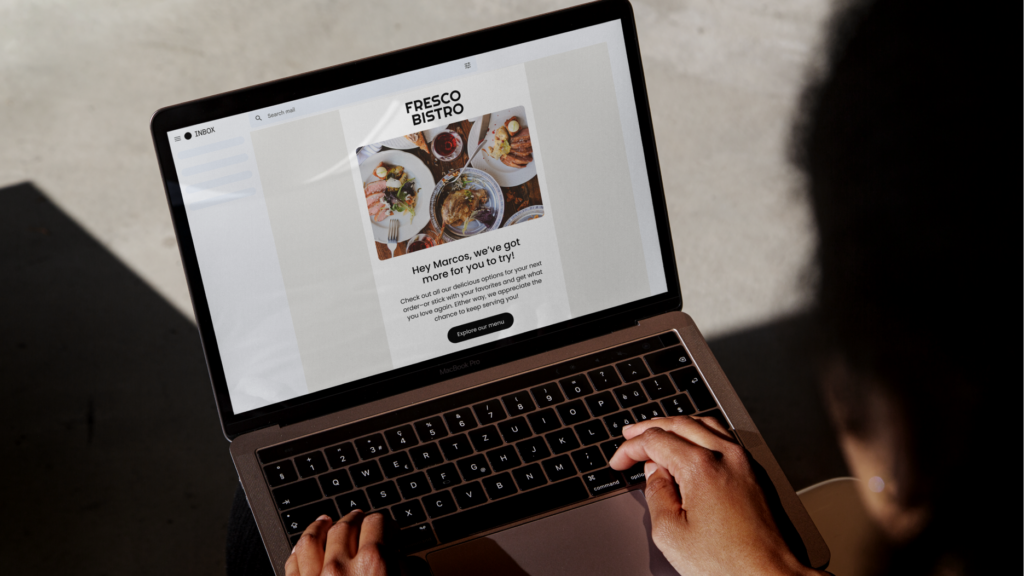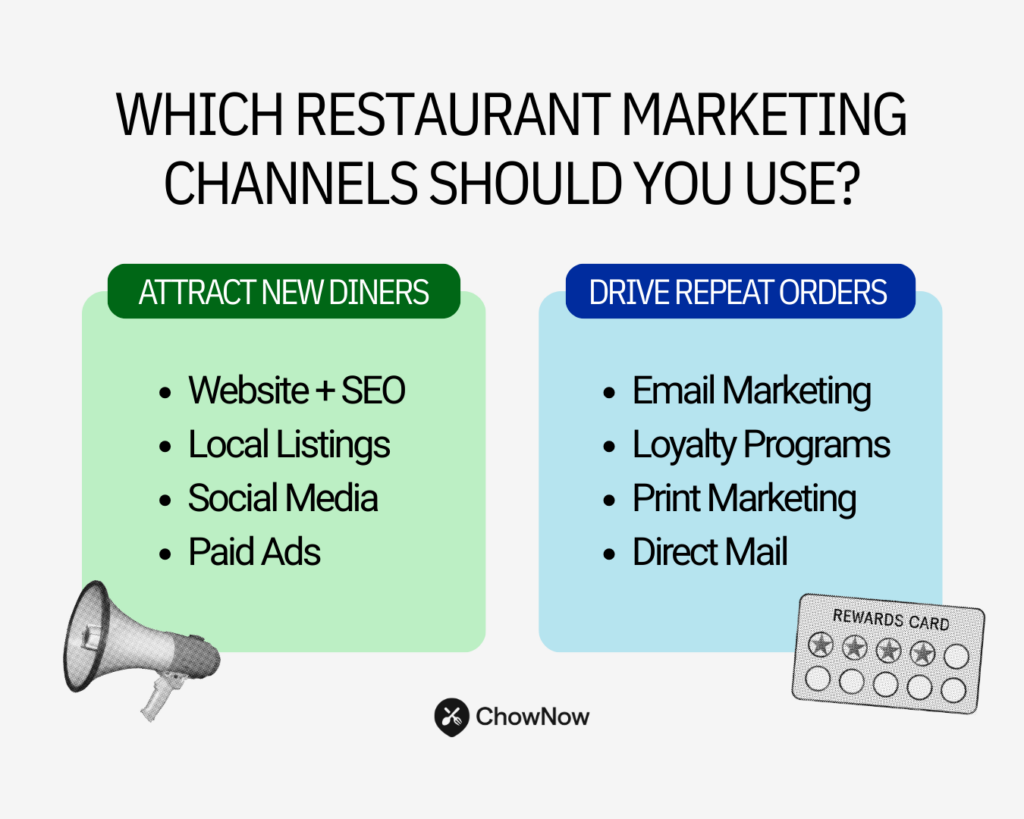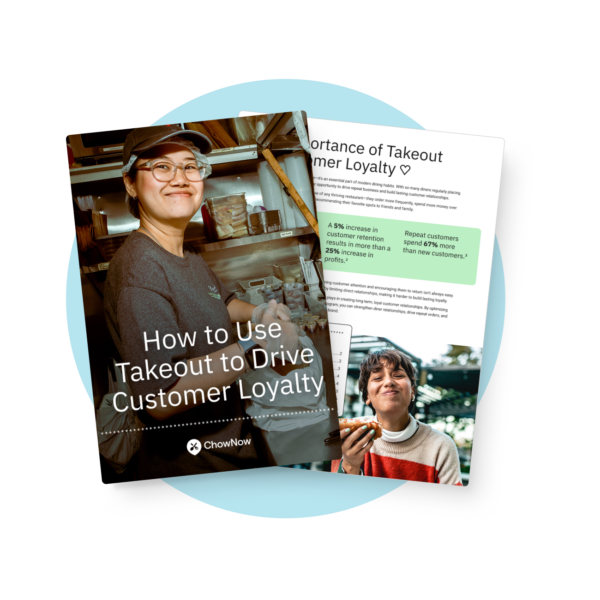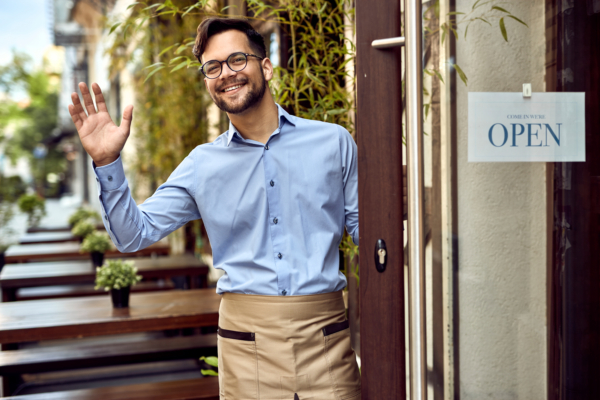How to Build a Restaurant Marketing Plan That Wins New Diners and Boost Sales

After perfecting your menu, securing suppliers, and training staff, one big question remains: how do you actually get customers in the door?
The answer is marketing, whether through social posts, email campaigns, or local promotions. A restaurant marketing plan helps your overall business plan in:
- Establishing clear goals
- Staying focused and consistent
- Measuring results over time
In this article, you’ll learn how to:
- Attract new diners by boosting visibility and standing out in a crowded market.
- Drive repeat business through personalized outreach and loyalty-building strategies.
- Increase revenue with smart promotions, upsells, and margin-friendly ordering channels.
Why You Need a Restaurant Marketing Plan
A strong marketing plan is the foundation of your restaurant’s success. Think of it as your roadmap: a clear strategy with practical steps that keep you focused on your goals.
With an actionable restaurant marketing plan, you can guide your efforts, measure results, and grow sustainably. A well-crafted one helps attract customers, increase revenue, and support restaurant growth by guiding your promotional strategies and differentiating your restaurant from competitors.
This guide outlines the essential elements of a restaurant marketing plan—from defining your brand and budget to selecting the right tools and measuring success.
Step 1: Understanding Your Restaurant’s Brand
Your restaurant’s brand is the heart of your marketing efforts. It’s more than just a logo or a catchy slogan—it’s the unique personality and promise that you deliver to every guest. Defining why your restaurant exists through a clear mission statement is a key part of building a strong brand identity. A clear, compelling brand helps your restaurant stand out in a competitive market and creates a lasting impression that keeps customers coming back.
By defining what makes your restaurant special and consistently communicating that message, you lay the foundation for all your marketing initiatives.

Brand Identity
Your brand is more than a logo or slogan—it’s the personality and promise your restaurant delivers.
- Brand Identity: Create a consistent look and feel across your website, menus, signage, and social media (logo, colors, typography).
- Messaging: Clarify what makes your restaurant unique and communicate it consistently.
A recognizable brand builds trust and keeps diners coming back.
Brand Consistency
Brand consistency is a cornerstone of any successful restaurant marketing plan. When your restaurant presents a uniform image and message across all marketing channels—whether it’s your website, social media platforms, or printed marketing materials—you build trust and recognition with your target customers.
A consistent brand identity not only makes your restaurant more memorable, but it also reinforces your unique selling proposition every time a customer interacts with your business.
To achieve this, restaurant owners should develop a well-structured marketing strategy that clearly defines the brand’s mission, vision, and values. This strategy should be tailored to your target audience and reflect what sets your restaurant apart from the competition.
By maintaining a cohesive look, tone, and message across all touchpoints, you increase brand visibility, attract new customers, and encourage repeat business.
Ultimately, brand consistency helps foster customer loyalty and positions your restaurant as a reliable choice in a crowded market.
Step 2: Conduct a Competitive Analysis
Understanding your competitors helps you find your edge. Conduct a SWOT analysis (Strengths, Weaknesses, Opportunities, Threats) to:
- Spot competitor strategies
- Identify gaps you can fill
- Highlight your unique selling proposition
The restaurant’s location is a key internal factor in a SWOT analysis, as it affects foot traffic and competitive positioning.
With this insight, you can refine your marketing strategy and avoid common pitfalls.

Step 3: Set Your Marketing Budget
Marketing is an investment in future customers. Decide how much you can set aside each month, quarter, or year based on your cash flow.
There’s no one-size-fits-all number, but flexibility is important. Leave room to act on unexpected opportunities, like a social trend tied to your menu.
You’ll also want to adjust your plan based on performance data. A marketing plan based on ongoing analysis and results is more effective, ensuring your spending stays tied to real outcomes.
As with all budget concerns, marketing expenses can add up quickly if you’re not monitoring your costs regularly or forecasting future costs. Investing in an automated marketing solution, like automated email marketing, can help keep expenses predictable and manageable.
Tools like ChowNow’s Automated Email Marketing help keep your marketing expenses predictable and easy to manage.

Step 4: Define Your Target Audience
It’s a lot easier to hit a specific target than to aim at everything and hope something sticks. That is why you have to consider the following:
- Demographics: Age, gender, income
- Location & lifestyle: Where they live and how they spend time
- Behavior: Dining preferences, values, and interests
Understanding your target market is crucial, as it allows you to tailor your marketing strategies to the specific segment most likely to engage with your restaurant. Also, analyzing consumer behavior helps you adapt your marketing strategies to shifts in customer preferences and market trends.
Researching your local market and competition is a great way to narrow your focus to the most relevant audience possible. Check out our market analysis guide for more details on how to research your target audience and how to utilize that data in your business plan.
Once you have a defined target audience, meet them where your marketing efforts will have the most impact. Tailor your marketing efforts to your target customers or those most likely to visit your restaurant. For example, younger diners often discover restaurants online so prioritize SEO and social media.

Step 5: Establish Your Marketing Goals
You need to have some way to measure the success of your marketing strategy. That means creating a firm goal that lets you collect data to make an objective judgment of how effective your marketing efforts have been. This is usually done by establishing Key Performance Indicators or KPIs. Here are some example KPIs you might want to consider:
- Customer Acquisition Cost (CAC): The total cost of sales and marketing efforts divided by the number of customers acquired. You want the ratio to be low, i.e. you’re not spending too much per new customer.
- Marketing Return on Investment (ROI): The total increase in revenue minus marketing costs divided by marketing costs. This shows how much increased revenue your marketing efforts are bringing in.
- Repeat Customer Rate: The number of customers who have purchased before divided by the total number of customers in a set period of time. If your marketing efforts are focused on increasing loyalty, this is a great KPI to measure. Tracking repeat customer rate is essential for retaining customers, as it helps you understand how well your business is encouraging guests to return. Implementing strategies to retain customers, such as loyalty programs or personalized offers, can further boost this metric.
- Customer Lifetime Value (CLV): Multiply three values: your customers’ average order value, the average number of orders in a set period and the average customer retention time. This can be useful to calculate initially as a baseline that you can then measure future growth against.
Ultimately, having a high number of satisfied customers is a strong indicator of marketing success and contributes to long-term business growth.
Step 6: Capture and Use Customer Data
Capturing and using customer data is just as important as defining your target audience. By analyzing ordering habits, and feedback, you can identify trends and create personalized outreach that resonates with your diners.
Customer data is your restaurant’s secret weapon. It shows you what diners actually want, so your marketing never feels random. If someone always orders vegetarian pizzas, sending them a meat lovers’ discount is a wasted effort—but tailoring offers to real habits keeps guests coming back.
Your POS, online ordering system, and even online reviews are goldmines of insight. The key is making sure you have full access to that data and acting on what it tells you—whether that means adjusting your menu, personalizing promotions, or building stronger loyalty programs.

Restaurants that use data to guide decisions see up to an 8–10% increase in profits. The message is clear: the more you know your guests, the better you can serve them—and the faster your business grows.
Step 7: Choose Your Marketing Tools & Channels
You don’t need to be a marketing pro to reach diners effectively. Even small efforts on the right channels can deliver results and you can scale over time. Combining various marketing tactics is key to building a successful plan.
Think of your tools in two buckets: attracting new diners and driving repeat orders.

Restaurant marketing strategies involve a comprehensive approach that uses both traditional and digital tools to promote your restaurant and engage customers across multiple channels. Employing an effective marketing strategy means combining different channels, such as direct mail and digital platforms, while tracking results and refining your campaigns to achieve better ROI and business growth. Here are a few ideas for effective marketing tools and channels to get you started.
Marketing Tools to Attract New Diners
Here are some of the most valuable ways to attract new diners and boost your brand’s visibility online:
- Restaurant Website
First impressions matter, and it is critical to have a web presence so customers can browse your menu, see your brand’s personality and ideally place orders. ChowNow can help create a premium branded website to maximize your brand awareness and profit potential.
Once you have a web presence, Search Engine Optimization (SEO) helps ensure diners are actually finding your site. Ranking well in search engines like Google is essential for increasing your restaurant’s visibility and attracting more diners.
Incorporating brand storytelling on your website also helps create a cohesive narrative that resonates with your target audience and differentiates your restaurant.
- Local Search Marketing
Related to SEO, local search marketing means leveraging any sites where diners might be looking for your restaurant, such as Google, Yelp or TripAdvisor. Take advantage of these platforms and ensure they are benefiting your business. That means optimizing your Google profile with up-to-date information and managing Google reviews.
Online reviews play a crucial role in reputation management and can influence potential guests’ decisions. It’s also important to claim and optimize your business page on review platforms to ensure accurate information and better engagement. Restaurant owners can leverage these platforms by responding to reviews and using platform-specific tools to improve visibility and attract more customers. Engaging with local media and food bloggers can also boost your restaurant’s visibility and help build strong community relations. Check out our local search marketing tips to boost your online visibility.
- Social Media
Ideally, you should be on all platforms (Facebook, Instagram, TikTok, etc.) using your profile to post about specials, share stories and promote online orders. Regular social media posts are essential for engaging customers, building brand awareness, and promoting special offers or events. Simply showcasing an item can be a great way to whet a customer’s appetite. Check out more of our social media posting ideas here.
You may also consider paid online ads. Paid ads reach a wide audience and can help target specific demographics and boost the visibility of your promotions for measurable results.
Whether you run a fine dining establishment or a fast food restaurant, tailoring your marketing strategies to your unique business type can help you stand out and attract more diners.
Marketing Tools to Drive Repeat Orders
To bring customers back and drive loyalty, you’ll want to use more direct or personal marketing channels, such as these top tools:
- Email Marketing:
Encourage diners to order again by staying at the top of their inbox. A personal touch or promotion adds even more value with minimal effort. Email marketing is also a powerful way to build and maintain customer relationships through ongoing engagement. Check out ChowNow’s Automated Email Marketing which can drive up to 60% more orders. - Loyalty Program:
Discounts or free items are huge incentives for repeat customers. Best of all, there are numerous ways you can implement loyalty offers, including punch card programs, points-based programs or subscription models. Tailor your loyalty initiatives to the unique needs of your own restaurant to stand out from competitors. Check out our guide to restaurant loyalty programs here. - Print Marketing:
Printed materials are a useful way to both promote specials and convert in-store diners to online ordering, i.e. remind them about the convenience of takeout and delivery.
Plus, if you’re not sending printed materials directly to customers, print marketing can also be used to attract new customers and boost brand awareness. - Direct Mail
Direct mail remains a powerful tool in the restaurant marketing toolkit and is especially effective for targeting local neighborhoods, promoting new menu items, or reminding past guests to visit again.. Sending postcards, flyers, or special offers directly to potential customers’ mailboxes can help you reach new audiences and encourage repeat business. To maximize the impact of your direct mail campaigns, include a clear call-to-action—such as a limited-time discount or invitation to a special event—and make your offer compelling.
Step 8: Build a Marketing Calendar

A marketing calendar is essential. It organizes your efforts so you consistently reach your audience and stay top-of-mind.
Using a restaurant marketing plan template can help organize and streamline the planning process, making it easier to create a comprehensive and effective strategy.
Mapping out strategy in advance lets you coordinate across channels—social, email, direct mail, loyalty programs—and keep a steady drumbeat of engagement all year.
When building your marketing calendar, consider including:
- Seasonal promotions and local events that align with your restaurant’s location and community
- Holiday specials and limited-time offers to drive excitement and foot traffic
- Announcements for new menu items or updates to your offerings
- Social media contests and giveaways to boost engagement on your social media channels
- Regular email marketing campaigns and newsletters to keep your loyal customers informed
- Direct mail campaigns to reach potential customers in your area
- Loyalty programs to encourage repeat business and reward your best guests
Be sure to include local community engagement activities, such as participating in local events or partnering with community organizations, to further enhance your restaurant’s visibility and connection with your neighborhood.
By tracking your marketing campaigns and using data analytics to measure marketing success, you can see what’s working and adjust your plan for even better results.
A well-planned marketing calendar ensures your marketing efforts are proactive, organized, and effective—helping your restaurant stand out and grow in a competitive market.
Step 9: Execute Your Marketing Plan
You don’t need to execute all of these marketing tips at once! For new restaurants or those with limited budgets, focus on the channels that best align with your business goals and take advantage of automation tools to take the stress off your plate.
Your restaurant marketing strategy is the key ingredient that brings all your hard work together into a complete, successful restaurant. From drawing in new customers to retaining loyal ones, a thoughtful restaurant marketing plan is a vital benefit to your business.
Restaurant Marketing Plan Frequently Asked Questions
What is a restaurant marketing plan?
A restaurant marketing plan is a roadmap that outlines how you’ll attract new diners, encourage repeat visits, and grow revenue. It defines your budget, audience, goals, and the tools you’ll use to promote your restaurant.
Why is a marketing plan important for restaurants?
Without a plan, marketing efforts can feel scattered. A structured strategy keeps your team focused, ensures resources are spent wisely, and helps you measure what’s actually driving results.
How much should restaurants spend on marketing?
There’s no universal number as it depends on your cash flow and goals. Many restaurants allocate 3–10% of revenue toward marketing. What matters most is tracking costs, staying flexible, and treating marketing as a growth investment. The restaurant’s location can also influence marketing spend, as high-traffic or competitive areas may require a larger budget to stand out.
What marketing tools are most effective for restaurants?
The essentials include a strong website, local search listings, social media, email campaigns, and loyalty programs. Together, these attract new guests and keep regulars coming back. Community events and partnerships also help build brand visibility.
How can restaurants measure marketing success?
Key metrics include Customer Acquisition Cost (CAC), Return on Investment (ROI), Repeat Customer Rate, and Customer Lifetime Value (CLV). These help you see what’s working and where to adjust.
Do small restaurants really need a marketing plan?
Yes. Even on a tight budget, a marketing plan ensures every effort, whether posting on Instagram, running a promotion, or printing flyers, works toward clear goals instead of being one-off experiments.






